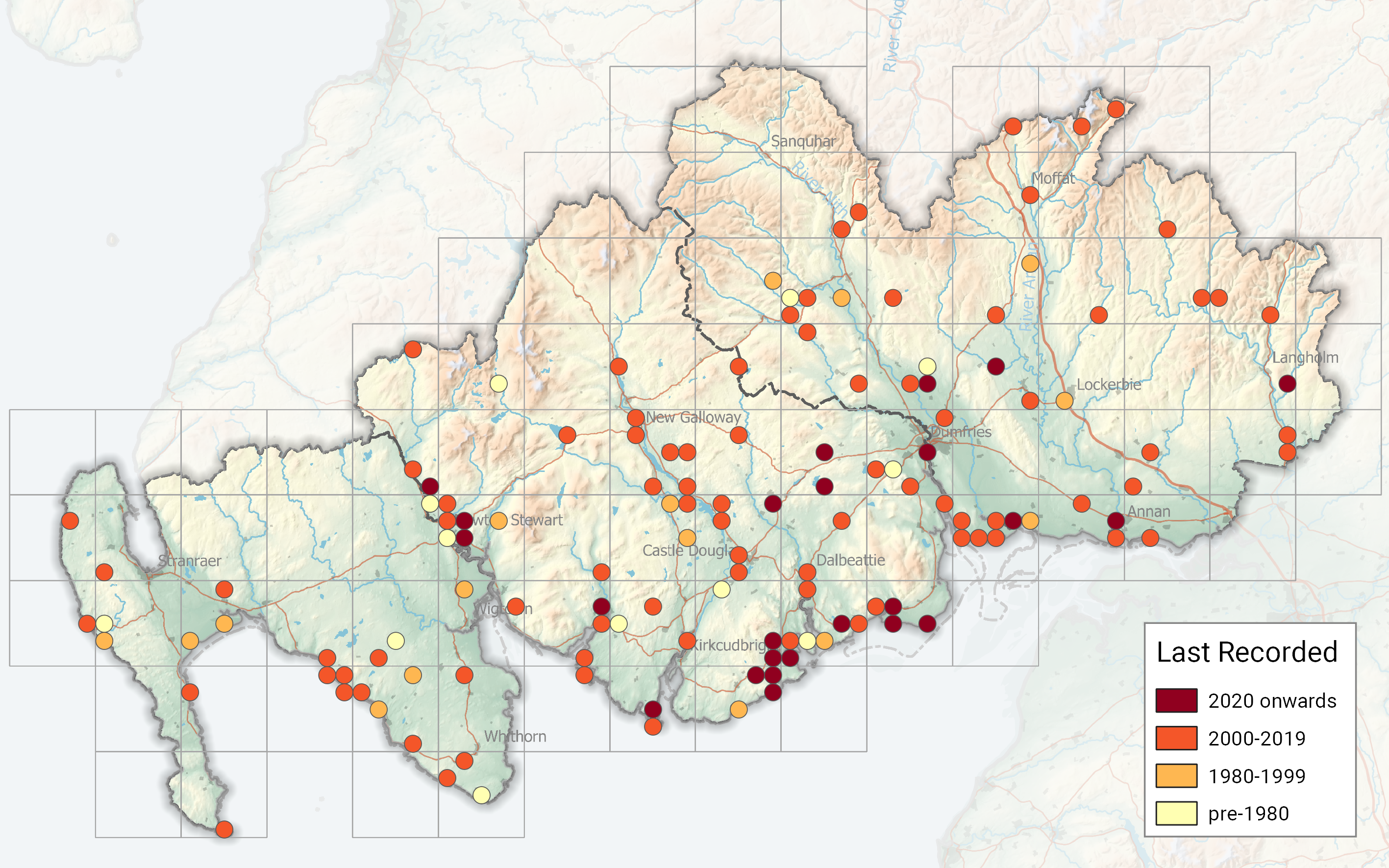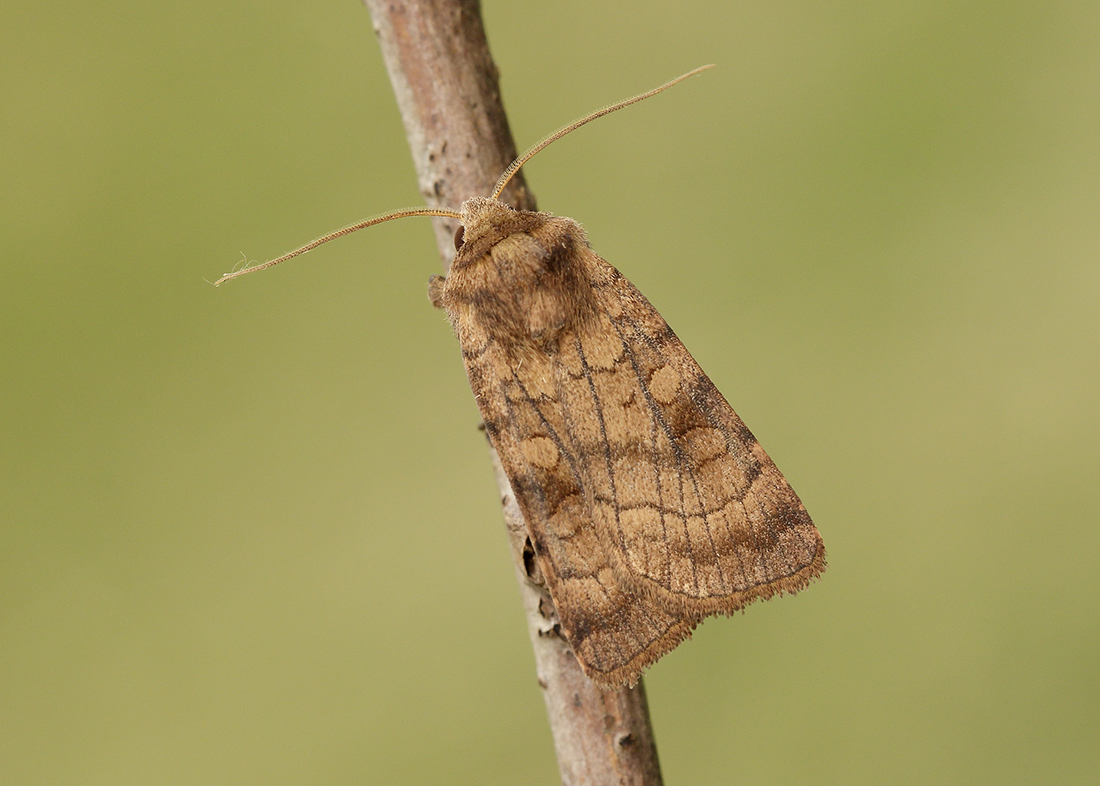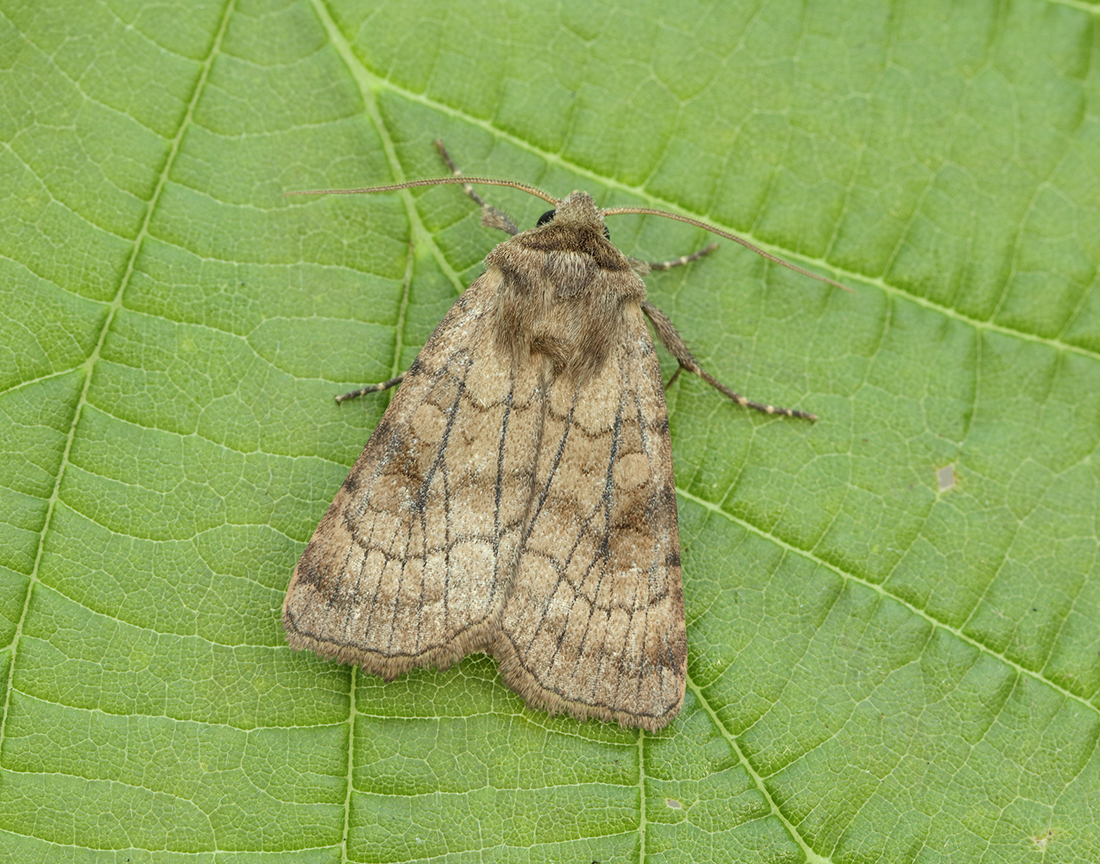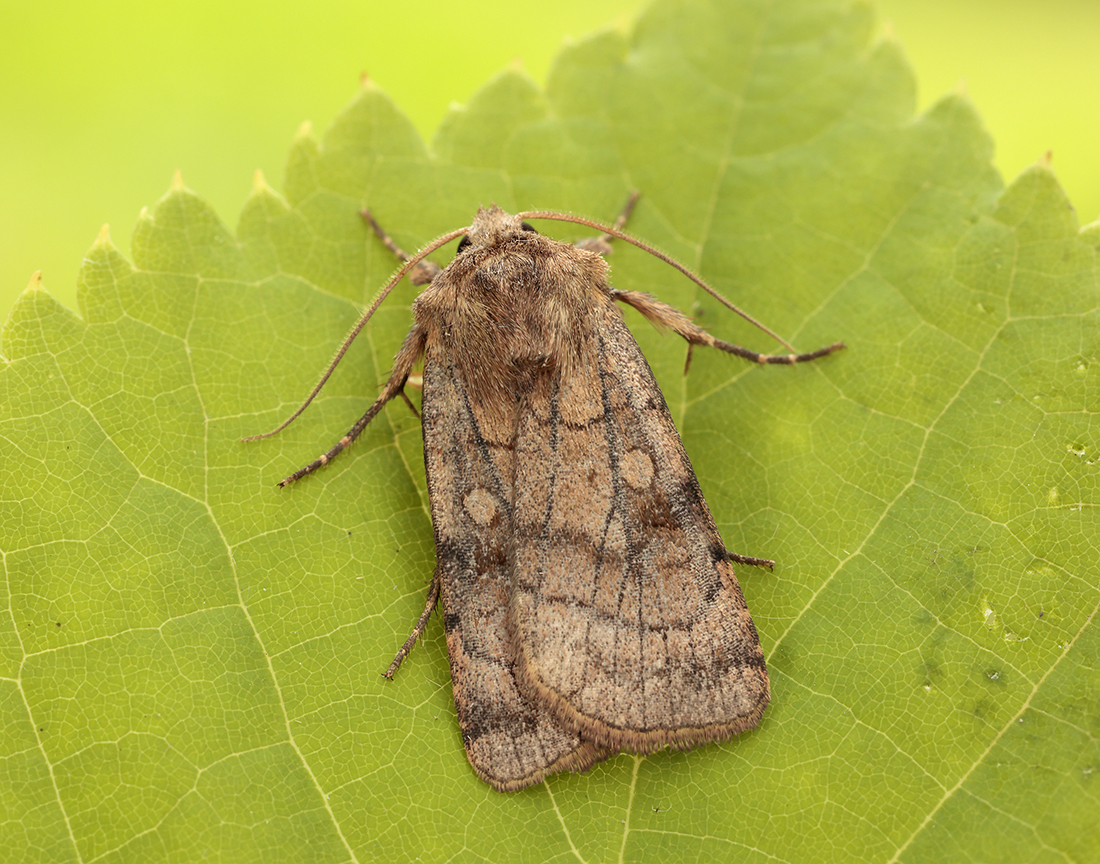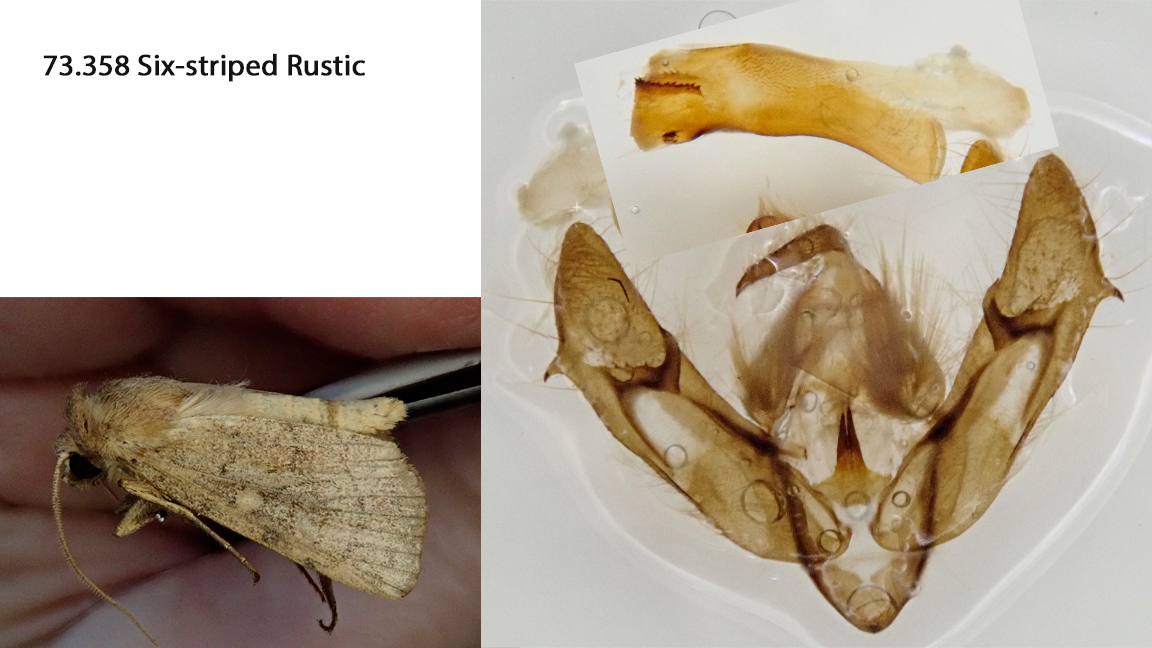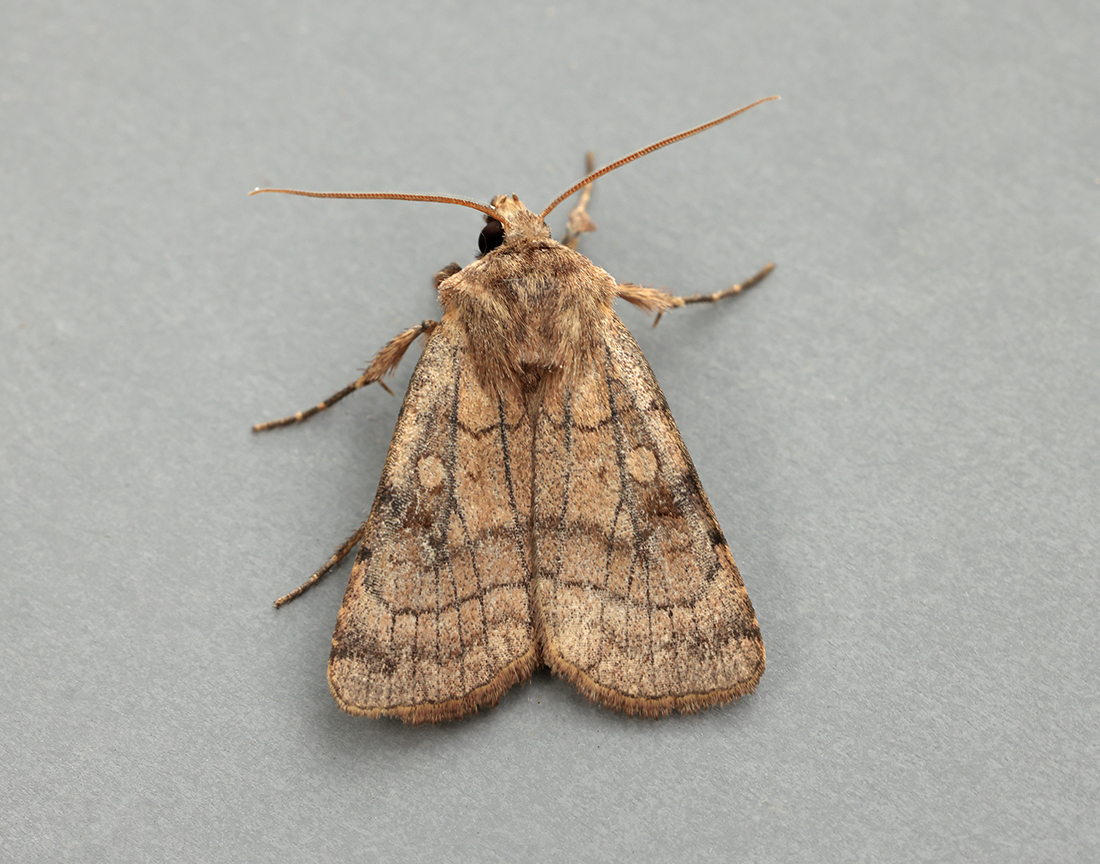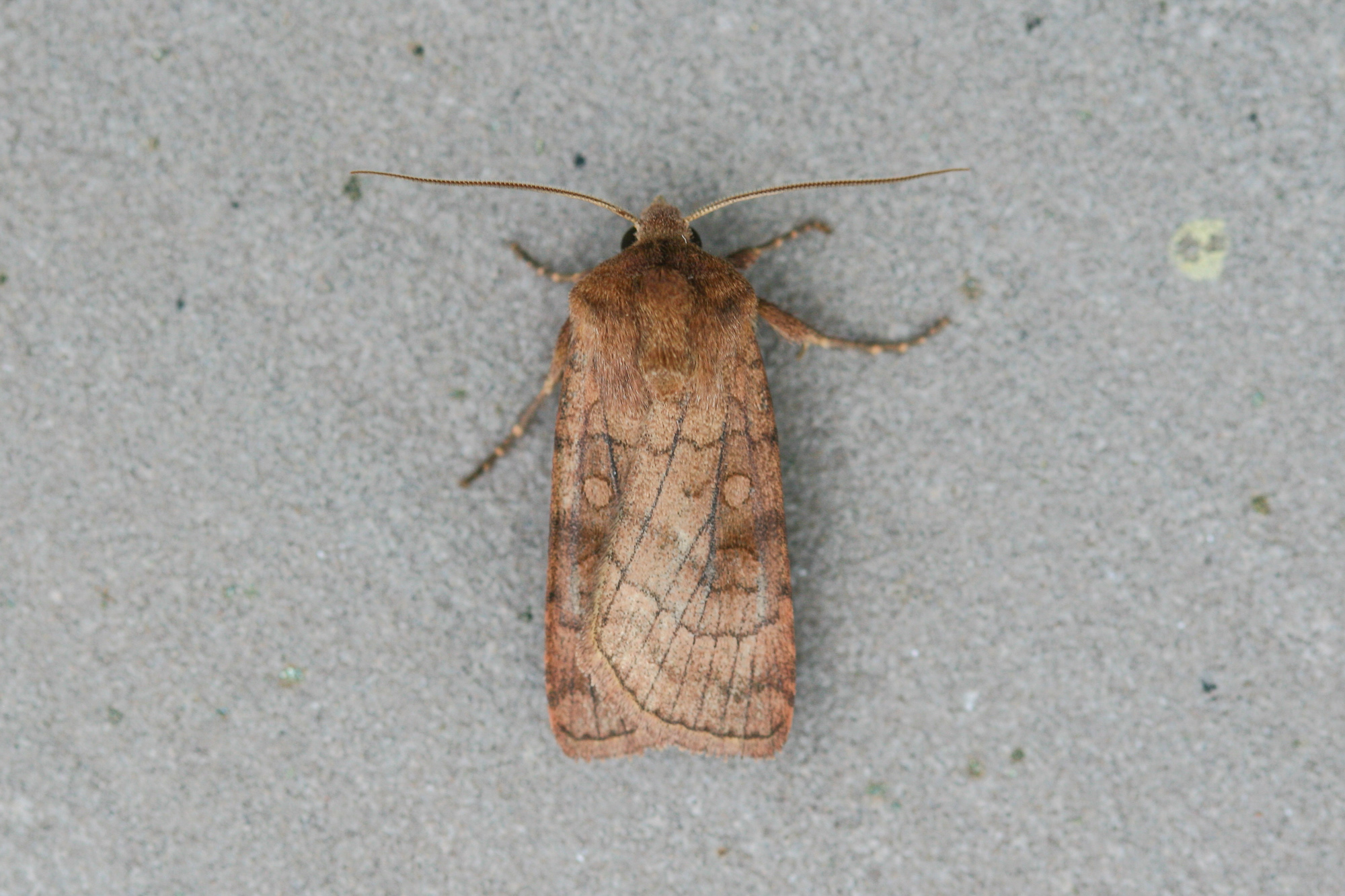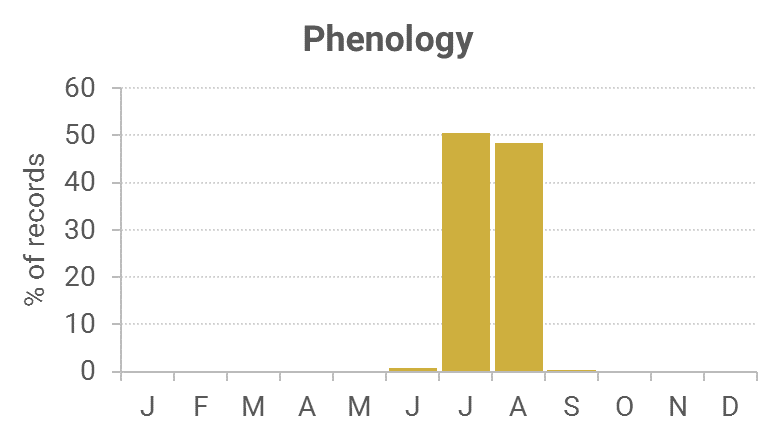Identification
The dark veins, fine dark cross-lines and dark-outlined pale oval and kidney are distinctive.
Recording Method
Attracted to light. Also feeds at sugar and flowers, particularly ragworts.
Life cycle
One generation. Overwinters as a larva during September to April, hiding by day and feeding at night, with pupation taking place underground. Very difficult to separate the larva from Square-spot Rustic with any certainty.
Larval foodplants
Hedge Bedstraw, Bramble, Ribwort Plantain and Bluebell.
Habitat
Marshes, fens and damp woodland, but also gardens and hedgerows.
History
Lennon (1863) had found it at Dalskairth (VC73). Douglas Robinson (1870-71) had found it to be not rare on Almorness (VC73) in July. K. J. Morton of Edinburgh (1900) while on a visit in July 1899 to Wigtownshire had found this species in the Monreith area. Gordon (1913) had stated it to be local and fairly common, having found it on ragwort, Corsemalzie, and one at dusk at Alticry, Wigtownshire, on 16th July 1906.
Sir Arthur Duncan (1909-84) during his lifetime had found it at Closeburn, Tynron and Castlehill, Dumfries (all VC72).
During 1965-74 there were ten records from widely spread sites. Then, from 1974 to 1992 there were 160 records from all the Rothamsted stations, showing it to be a widespread moth.
From 1992 to 2010 the regular trapped sites at Kirkton, Mersehead RSPB, Cally Woods and Old Torr provided a good number of the 220 records in the period, with the rest from scattered sites across the region.

